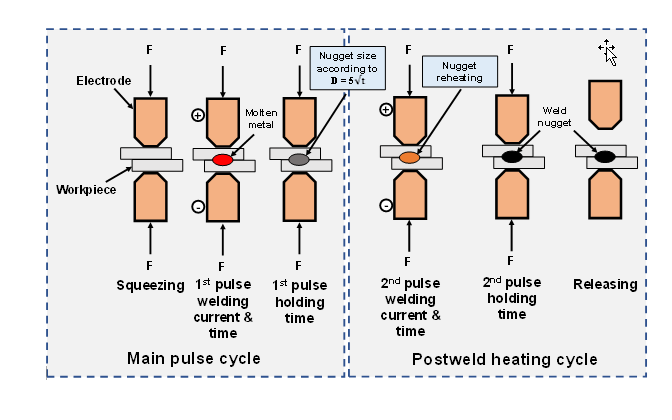Tue, Nov 26, 2024
[Archive]
Volume 19, Issue 4 (Desember 2022)
IJMSE 2022, 19(4): 1-10 |
Back to browse issues page
Download citation:
BibTeX | RIS | EndNote | Medlars | ProCite | Reference Manager | RefWorks
Send citation to:



BibTeX | RIS | EndNote | Medlars | ProCite | Reference Manager | RefWorks
Send citation to:
Soomro I A, Pedapati S R, Awang M, Soomro A A, Alam M A, Bhayo B A. Optimization and Modelling of Resistance Spot Welding Process Parameters for Quality Improvement Using Taguchi Method and Artificial Neural Network. IJMSE 2022; 19 (4) :1-10
URL: http://ijmse.iust.ac.ir/article-1-2709-en.html
URL: http://ijmse.iust.ac.ir/article-1-2709-en.html
Imtiaz Ali Soomro 
 , Srinivasa Rao Pedapati
, Srinivasa Rao Pedapati 
 , Mokhtar Awang
, Mokhtar Awang 
 , Afzal Ahmed Soomro
, Afzal Ahmed Soomro 
 , Mohammad Azad Alam
, Mohammad Azad Alam 
 , Bilawal Ahmed Bhayo
, Bilawal Ahmed Bhayo 


 , Srinivasa Rao Pedapati
, Srinivasa Rao Pedapati 
 , Mokhtar Awang
, Mokhtar Awang 
 , Afzal Ahmed Soomro
, Afzal Ahmed Soomro 
 , Mohammad Azad Alam
, Mohammad Azad Alam 
 , Bilawal Ahmed Bhayo
, Bilawal Ahmed Bhayo 

Abstract: (8596 Views)
This paper investigated the optimization, modelling and effect of welding parameters on the tensile shear load bearing capacity of double pulse resistance spot welded DP590 steel. Optimization of welding parameters was performed using the Taguchi design of experiment method. A relationship between input welding paramaters i.e., second pulse welding current, second pulse welding current time and first pulse holding time and output response i.e, tensile shear peak load was established using regression and neural network. Results showed that maximum average tensile shear peak load of 26.47 was achieved at optimum welding parameters i.e., second pulse welding current of 7.5 kA, second pulse welding time of 560 ms and first pulse holding time of 400 ms. It was also found that the ANN model predicted the tensile shear load with higher accuracy than the regression model.
Keywords: Resistance spot welding, Taguchi method, Artificial neural network, Regression model, Tensile shear load
Type of Study: Research Paper |
Subject:
Casting and Solidification
Send email to the article author
| Rights and permissions | |
 |
This work is licensed under a Creative Commons Attribution-NonCommercial 4.0 International License. |





